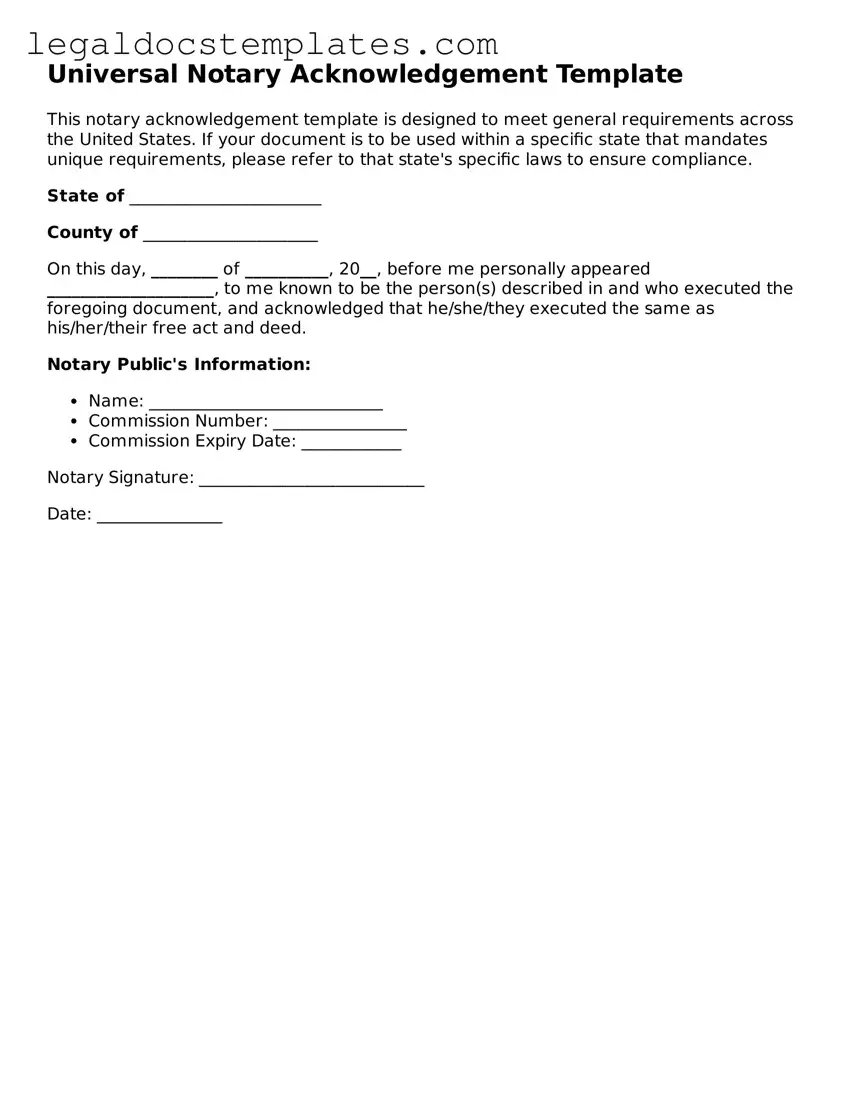One common mistake when completing a Notary Acknowledgement form is providing incomplete information. Signers often overlook fields, thinking they may not be applicable or important. However, every section of the acknowledgement is designed to confirm the signer's identity and willingness, making full completion crucial for the document's legality and the integrity of the notarial act.
Another misstep is incorrect information input. This ranges from misspelled names to inaccurate dates. Such errors can render the document questionable and lead to problems in transactions for which the document is required. It's essential to review the form carefully before submission to ensure all information is correct and matches identification documents exactly.
Signers sometimes fail to use their legal signature, instead opting for a more casual version of their name or even initials. For a Notary Acknowledgement, the signature must match the one on the signer's identification documents and the signature in the notary's logbook. Inconsistencies can raise doubts about the document's authenticity.
A subtle yet frequent oversight is the omission of the notary’s seal or stamp. Some signers might consider their job done once they've signed and filled out their parts without realizing that a notarial document is incomplete without the notary's official seal. This seal, along with the notary's signature, validates the acknowledgement.
Ignoring the venue - the state and county where the notarization takes place - is another mistake. The venue must be accurately filled out to reflect the location of the notarial act. Providing incorrect venue information can lead to questions about the notarization's validity, especially if the notary is not authorized to perform notarizations outside their jurisdiction.
Failing to provide or inaccurately stating the date of notarization presents another problem. The date must correspond to the actual day the notary witnessed the signatures. An incorrect date can invalidate the notarization or complicate record-keeping and legal proceedings.
Some individuals make the error of not reviewing the document with the notary present. The notary's role is not only to witness signatures but also to ensure that all parties have a clear understanding of the document. Skipping this step can lead to misunderstandings or the omission of crucial clarifications.
Attempting to notarize a document without all parties present is a significant misstep. Unless the type of notarization specifically allows for remote or electronic appearance (and the state’s laws permit it), all signers must physically appear before the notary to acknowledge their signatures.
Another mistake lies in not selecting the correct type of notary acknowledgement. Various forms cater to different scenarios, such as individual acknowledgements or corporate ones. Selecting the wrong type can lead to legal discrepancies and the need for re-notarization.
Lastly, signers sometimes neglect to ensure the notary has recorded the transaction in their notarial journal. This record is essential for verifying the notarization if questions arise later. Without it, proving the legitimacy of the notarization can become challenging.
